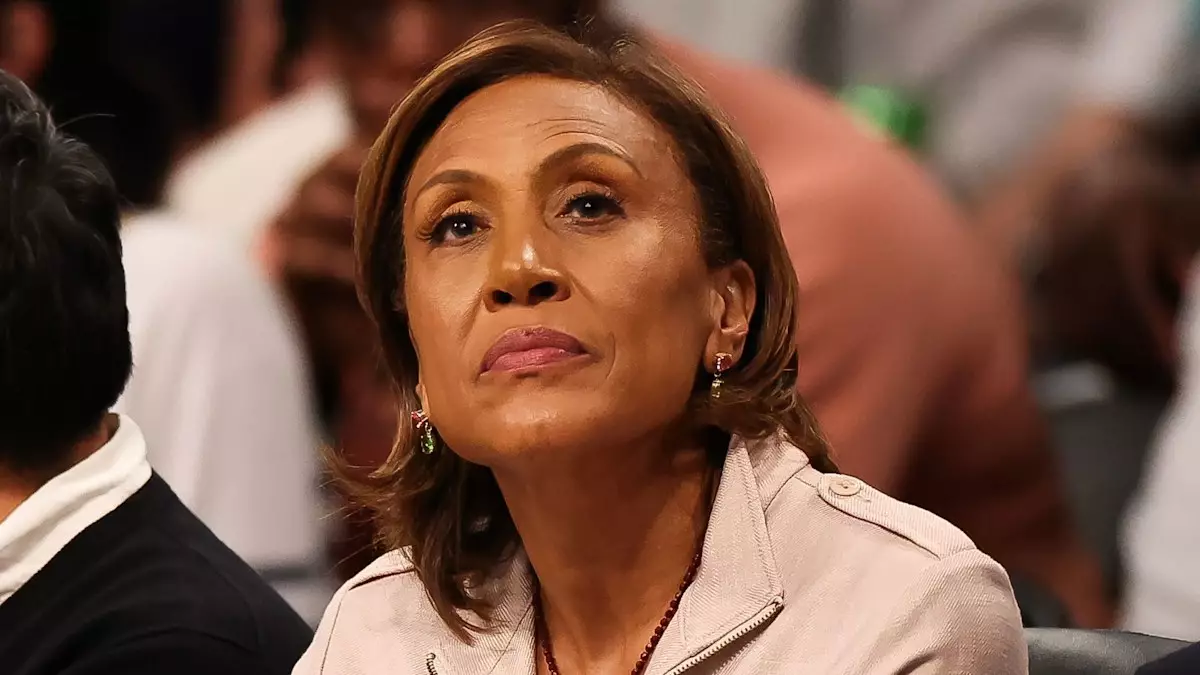Robin Roberts, co-anchor of Good Morning America (GMA), recently commemorated a pivotal moment in her life most viewers might find both inspirational and emotional. Over a decade has passed since she returned to GMA following a significant health challenge—a stem cell transplant that marked the beginning of a new chapter in her battle against myelodysplastic syndrome (MDS), a rare and often misunderstood blood disorder that jeopardizes the function of bone marrow. Roberts’ narrative not only sheds light on the impact of such debilitating illnesses but also emphasizes the profound importance of community support and the selfless acts involved in becoming a bone marrow donor.
In 2012, Robin’s life was irrevocably changed when she received her diagnosis of MDS. This blood disorder can lead to severe complications, affect how the body produces blood cells, and ultimately reduce life expectancy without appropriate treatment. After taking a leave of absence from her broadcasting duties for 174 days—a duration she recalls with vivid clarity—she underwent a life-saving bone marrow transplant. The donor? Her sister, Sally-Ann Roberts. The emotional gravity of such an act cannot be underestimated; not only did it signify familial love, but it also spotlighted the urgent need for more stem cell donors within the medical community.
The watershed moment of her return to GMA on February 20, 2013, marked not merely a personal victory but a rallying call for the audience. It provided an opportunity to educate the public, foster a spirit of giving, and inspire action. Since that day, Roberts has emerged as a steadfast advocate for registered bone marrow donors, using her platform to raise awareness about the National Marrow Donor Program (NMDP), formerly known as Be the Match.
During the recent segment on GMA celebrating her return, co-anchor George Stephanopoulos highlighted the profound milestone that Robin’s comeback represented. The program aired clips of her first broadcast following her transplant—archival footage that evoked nostalgia while reinforcing the journey she undertook. Viewers were treated to heartwarming testimonials from donors who joined the fight for those suffering from blood-related disorders. The audience included Robin’s nephew, Jeremiah Craft, as well as students and faculty from Southeastern Louisiana University, whose presence served to illustrate the ripple effect of her advocacy.
As the conversation transitioned to the special audience members—those who had bravely stepped up to register as bone marrow donors—Roberts and her colleagues exuded warmth and gratitude. Sam Champion, another GMA anchor, poignantly reflected on the blessing of being able to share these moments together. He pointed out how life often proceeds without recognition of the struggles others endure, yet Robin’s story brings clarity to the struggles faced by many. His remarks serve as a reminder of the fragility of life and the importance of cherishing time with loved ones.
One of the remarkable statistics shared during the segment was the significant increase in awareness and action taken since Robin’s advocacy began. The NMDP reported that, since her public revelations about bone marrow donation 12 years ago, over 37,000 individuals have joined the donor registry, and 155 people have successfully donated. Such numbers emphasize how one person’s journey can catalyze an entire community, lightening the burden of those stricken with diseases like MDS or other associated illnesses.
Katrice Randolph, a donor who joined the registry after encountering the NMDP booth during her college years, shared her emotional connection to advocacy. Her interaction with a young girl named Kelsey, who had sickle cell disease, illustrated the profound impact that registering as a donor can have on real lives. Katrice’s story resonated deeply, as it highlighted the ethical imperative many feel when faced with such choices—if it were their own family member in need, would they not wish for help?
Robin Roberts’ narrative is more than a personal victory; it is a tour de force of hope, resilience, and advocacy. Her journey post-transplant emphasizes the significance of community, awareness, and, importantly, the life-saving potential of donor registration. As she candidly shared, looking back at those early days remains emotionally challenging. Yet, through her visibility and commitment to advocacy, Roberts serves as a living testament to the power of healing and the importance of giving, proving every day that indeed, “this too shall pass.” The time spent as advocates—whether through sharing stories, volunteering, or registering as donors—can make a world of difference for those in need.

